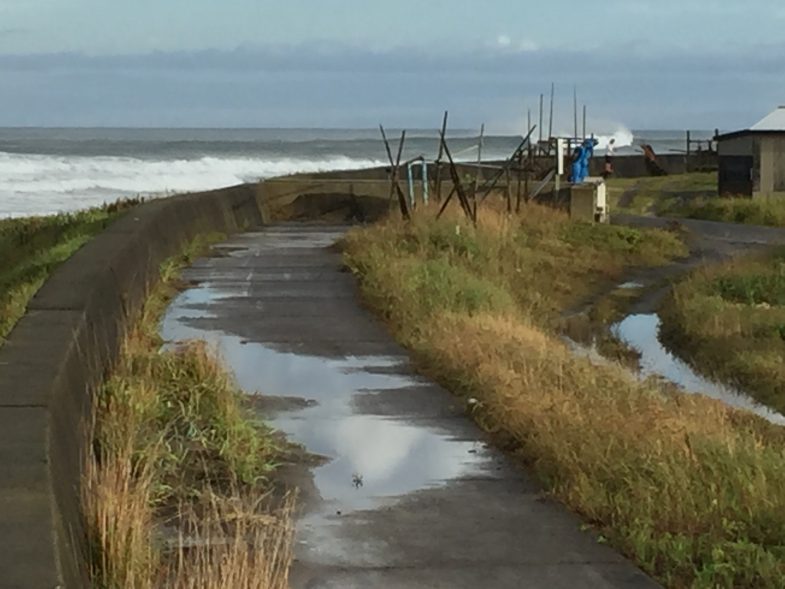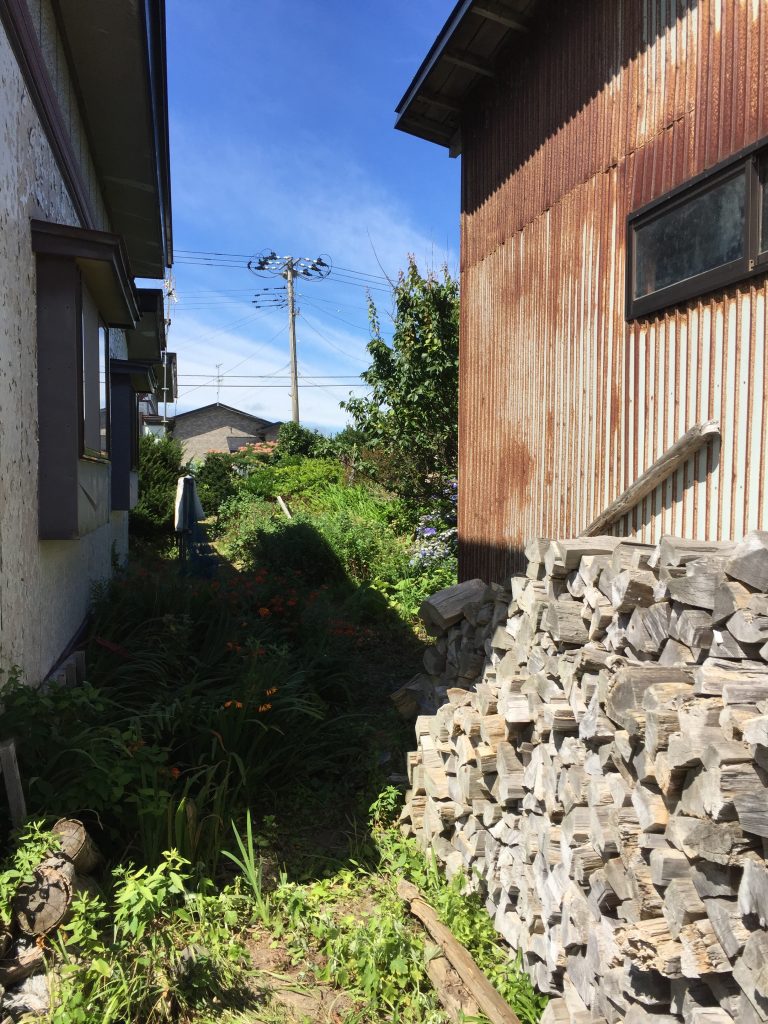
午後5時前、台風が過ぎた。台風が去る直前、直後の5分間の違いは劇的だ。吹き荒れていた雨や風がピタリと止み、青空が見えたと思うと急に日が差してくる。潮の満ち初め、貝や蟹などが湧き出てくるように、人も動き始める。
台風の大きさを考えると、この5分間の変化は台風の進行速度が非常に早かったことを示している。

This is the view from the south point of the garden of my home to north. Right side is a woodstock storage. Dried firewood have been piled for winter season by my father who dead four years ago. And nobody use it now.
我が家の南側の庭から北を見ているところ。正面は他人の家。右側の小屋が薪(まき)小屋兼物置。積みあげてあるのは冬用の薪。薪を斧で割り、積み上げて乾燥する。4年前に他界した父が割った薪だ。小屋の中にはもっとうず高く積んである。Echter、もうこの薪を燃やす人はいない。